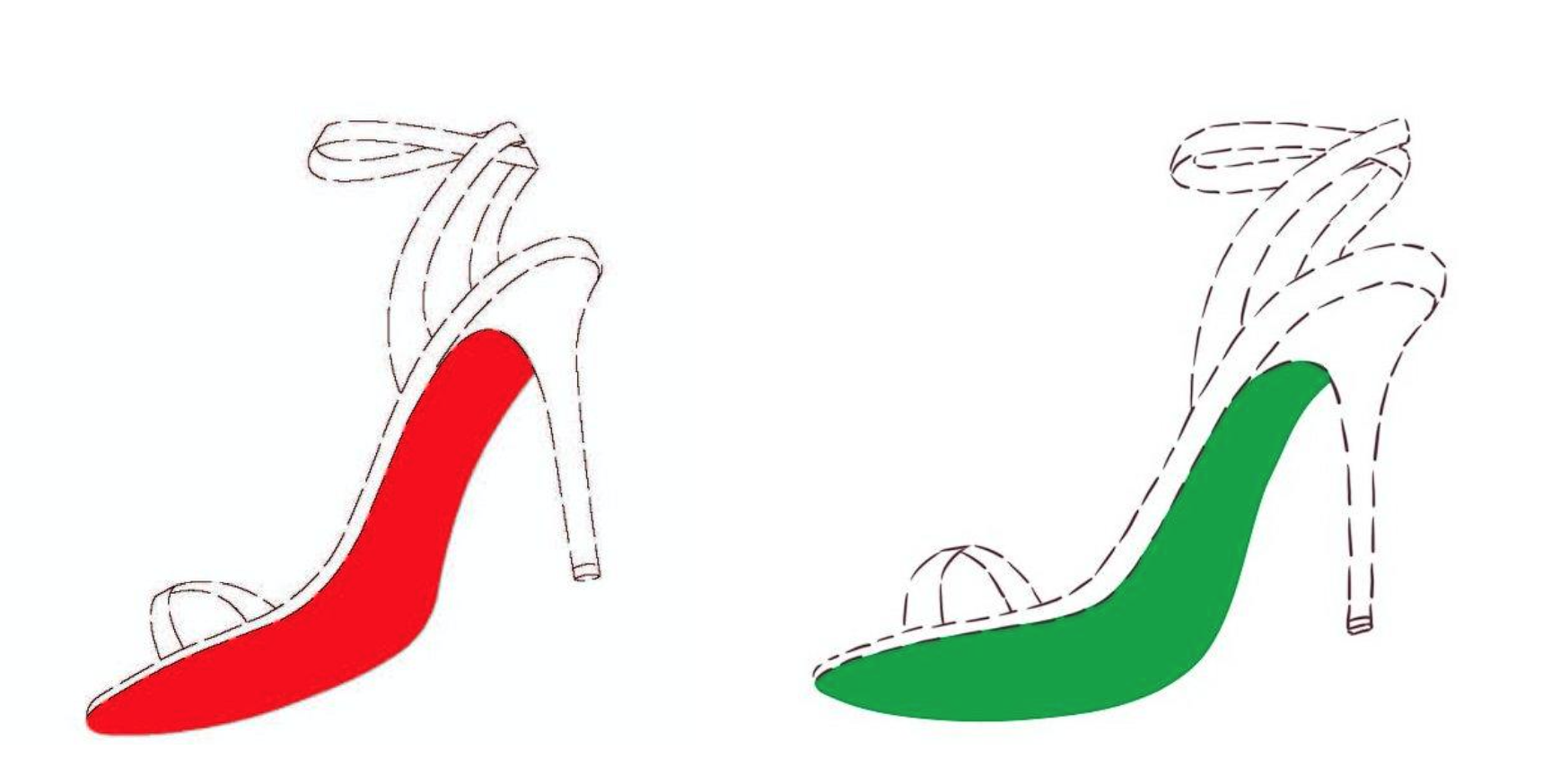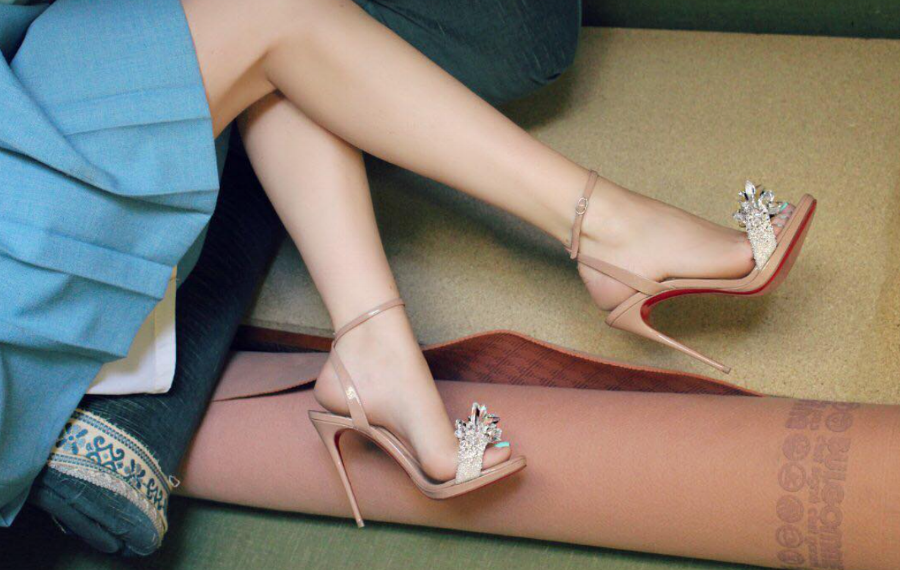One way to build a luxury shoe brand? Paint the soles a single color, position them among the likes of world-famous figures on red carpets, in fashion editorials, and on the bi-annual fashion month runways, and then wait for demand to skyrocket. This is the tactic that Christian Louboutin adopted back in 1991 and as a result of which, the French footwear company has sold more than 1 million pairs of its $700+ heels, sneakers, and flats, all of which bear a distinctive lacquered Chinese red sole.
The red sole – and its ability to identify a single brand – has enabled Louboutin to amass trademark rights around the world, and has seemingly caught the eye of a fellow footwear brand, one that also sees the effectiveness of – and value in – a colored shoe sole. That brand, Reginald Bendolph, is seeking to claim federal trademark protection for a green shoe sole, according to an application for registration it filed with the U.S. Patent and Trademark Office (“USPTO”) early this month.
The newly-filed trademark application claims that Irvington, New Jersey-based Reginald Bendolph maintains rights in “the product configuration/color of [a] shoe sole mark” in the specific color green embodied by Pantone’s 7481c hue, citing the brand’s first use of a green sole on shoes in March 2017, and including an image of the green sole on a pair of black ballet flats. Beyond that, the brand’s website currently offers an array of footwear, including a pair of shiny black calf leather pumps with the same green sole, which will set you back $200.
 Louboutin’s trademark drawing (left) & Bendolph’s trademark drawing (right)
Louboutin’s trademark drawing (left) & Bendolph’s trademark drawing (right)
There is something more interesting at play than whether Bendolph will be able to make a case that consumers associate a green shoe sole with a single source, that is, after all, the essence of trademark protection. (I would be willing to bet that the little-known brand – which has not been using the mark for very long, does not appear to advertise, is not the subject of widespread third party media attention, and is not being preyed upon by copycats, i.e., some of the factors used to prove the necessary secondary meaning for the protection of non-distinctive trademarks – will have a hard time with that).
Every trademark application must include a clear “drawing” or depiction of the trademark that the applicant is seeking to register so that the USPTO’s examining attorney can determine what exactly the trademark is. The drawing included with Bendolph’s application shows a green sole – i.e., the trademark – on a strappy, high heel sandal.
While Bendolph is not claiming rights in or seeking protection for the design of the sandal itself, with its covered stiletto heel, crisscross ankle strap, and thin strap that bands the open toe of the shoe, the drawing is striking, nonetheless. That is because, as trademark attorney Erik Pelton pointed out recently, it is an almost exact replica of the drawing that Louboutin used for the July 2007 application it filed with the USPTO for its red sole trademark.
Given that one of the bars for trademark registration with the USPTO is confusing similarity with an already-registered mark, it is worth asking, even if Bendolph could show that its green sole has amassed distinctiveness by way of secondary meaning, or that consumers, upon seeing the green sole, associate it with a single brand, will the brand be blocked by Louboutin’s existing mark thanks to the marked similarity of the drawings?
The answer? Almost certainly no. As trademark attorney Lee Curtis notes, “From a trademark point of view, this is not confusing, as the representation of the shoe [in Louboutin’s drawing] is technically not part of its registration claim.” In other words, in its since-approved application, which was slightly modified from its original form following the outcome of the case it filed against Yves Saint Laurent in 2012, Louboutin does not claim – or enjoy – rights in the sandal design; just the color and placement of the mark.
Moreover, as Curtis aptly asserts, the colors being claimed by the two brands are, obviously, different.
As for whether Bendolph’s trademark application – thanks to its use of a drawing substantially similar to Louboutin’s – gives rise to a claim of copyright infringement, that is another matter entirely.











